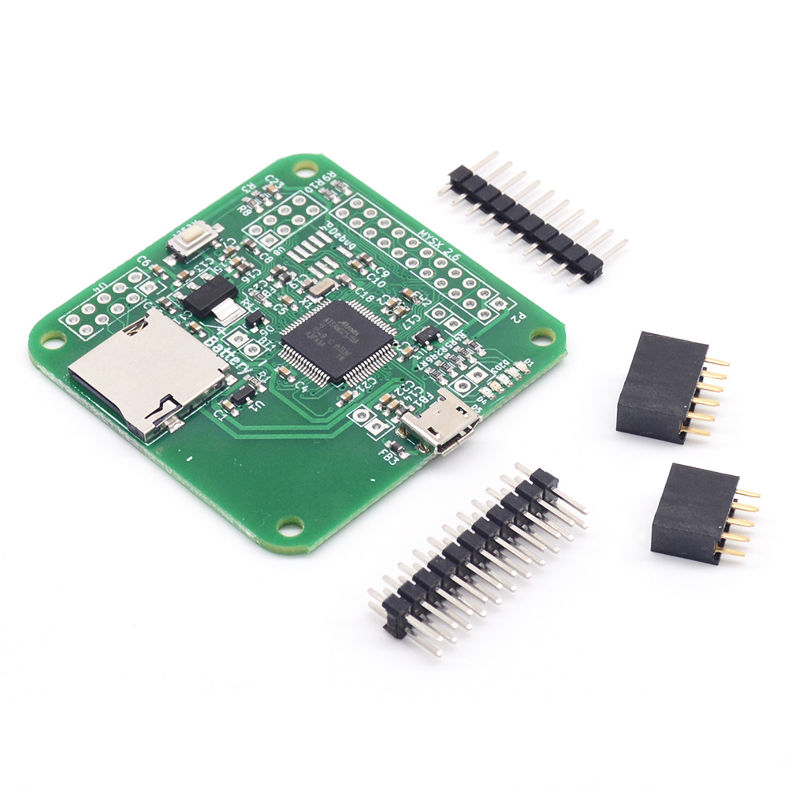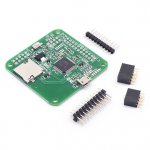
- Board size 5x5cm
- Atmel ATSAMD21 (Arm cortex m0+ cpu core) with
- 256Kb flash
- 32Kb RAM
- 48Mhz clock
- RTC module
- Micro sd card reader
- Socket for nRF24L01+ module (module not included)
- Pads for RFM69 module (module not included)
- Socket for W5100 ethernet module (module not included)
- Native USB port
- ATSHA204A for signing
- Onboard i2c eeprom
- 5 LED's (Red, Green, Yellow, Blue and Orange)
- MYSx 2.6 with
- Dedicated UART
- Dedicated SPI
- Dedicated Interrupts
- I2C bus (shared with onboard eeprom)
Original : https://www.openhardware.io/view/12/Sensebender-Gateway#tabs-instructions
Setup and use
You need to add your own radio, either NRF24L01+ or RFM69(H)W radio modules, which you can find in our shop under the radio section, Also if you want to use it as an ethernet gateway, you need to purchase a W5100 ethernet module, the small breakout edition is the one to choose.
Windows drivers
You will need to install the SenseBender GW driver if you are running a version of Windows older than Windows 10. See Appendix A below for driver install instructions.
Default sketch
The factory default sketch is a serial gateway using NRF24L01 radio and no signing. If you want to use it in this configuration, then it’s just adding the box header for the NRF24L01 module, plug the radio in, and connect the gateway with a USB cable to your computer. The default sketch can be found in the Mysensors examples collection, as “SensebenderGatewaySerial”.
Other configurations
If you want to use any other configuration, like RFM69(H)W radio, ethernet, or hardware signing with ATSHA204, then you need to reprogram the board with your own firmware. This is easily done with the Arduino software suite (we recommend using the latest version of the Arduino IDE), where you can add our board definitions that matches the gateway board. For details on how to add these board definitions, you should go here. In addition you need to install Arduino SAMD board files which are installed from the Arduino Boards Manager. After installing the board definitions, choose Sensebender Gateway as your target platform, this will probably be the last board in the list shown by Arduino IDE. Also, you will want to make sure you are using the MySensors libraries v2.2.0 or newer.
Please note that if you want to use the ethernet module, you need to raise the socket as much as possible above the board while soldering it, as the ethernet jack on board the ethernet module is slightly higher than the pinheaders on the board.


COMMENTS